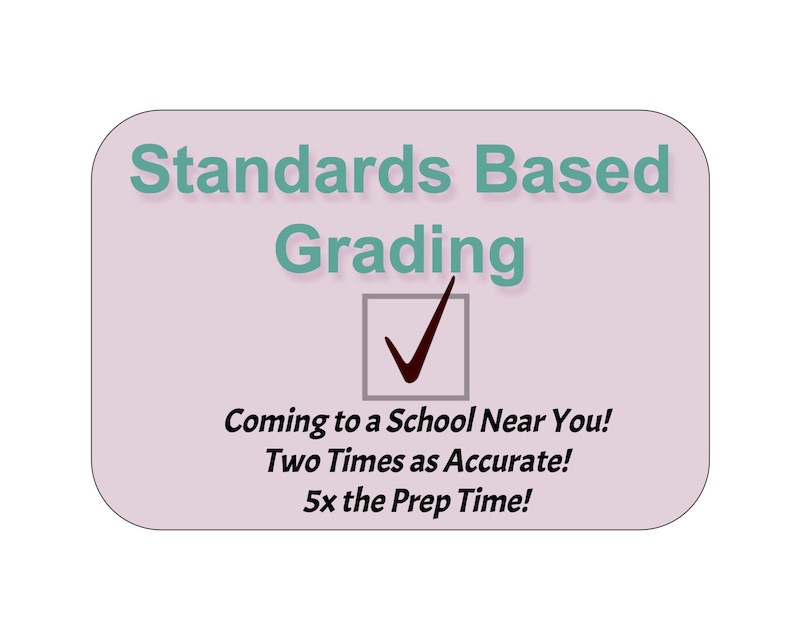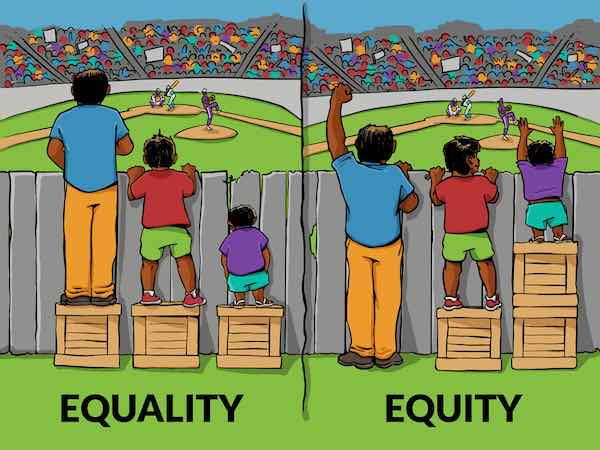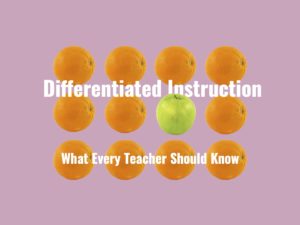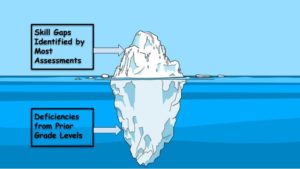
Is Standardized Testing Communist?
Standardized testing and communism both begin with a grand vision for equality. How can educators avoid the pitfalls and truly meet student needs?

If you’re an educator, you’ve probably heard of standards-based grading. Schools across the country are embracing the trend, eager for a quick fix to the problems presented by traditional grading.
But should you jump on the bandwagon? Or does standards-based grading simply substitute one set of problems for another?
It’s easy to see why many schools are looking for alternatives to traditional grades. Traditional grading is notoriously inaccurate. And while they provide a short-term incentive, traditional grades actually decrease student motivation over the long run. And they lead to all types of unwanted behaviors, from cheating to grade-grubbing.
Standards-Based Grading. The very name conveys authority, importance, and fairness. After all, who would choose a system called substandard grading? Or opinion-based grading?
Before I’d ever heard of SBG, I already knew that many of my students were starting the year missing important skills from prior grade-level skills. When I taught English, few of my middle and high school students were clear on comma rules or even parts of speech. When I taught middle school math, many students lacked foundations in fractions and basic operations.
But when I looked at their files, many had been getting A’s year after year. How could this be?
It didn’t take long to identify the culprits. Bonus points. Group projects. Homework done by parents. Teacher-made assessments that weren’t aligned to standards.
The reported grades were based on a hodgepodge of assessments. Once everything was averaged together, the final grade held very little meaning.
Not in my class, I thought. I was determined to eliminate the “fluff.” My grades would be fair and accurate. If my students didn’t know their parts of speech…It would be a rough year. But by June, I told myself, they’ll be thanking me.
The thing was, they didn’t thank me. The parents who believed their children were on grade level weren’t so excited to learn otherwise. And rather than being inspired to work harder, many of my struggling students got frustrated. Some just gave up.
Looking back, I feel a bit like a cartoon villain. I saw a complex and difficult to navigate system. “Look at this messy, disorganized forest. You can’t tell what’s what in here. If we just clear out all this nonsense, I could put up some nice, orderly condominiums.”
In my enthusiasm for order and consistency, I had failed to appreciate the humanity and institutional memory woven into the existing system.
These days, when I read about standards-based grading, it sounds an awful lot like that condominium complex I was trying to build.
To be clear, though I’ve come to appreciate the humanity and institutional memory built into traditional grading systems, I’m not saying they’re perfect. There are plenty of problems with traditional grades. And these problems do need to be addressed.
Here are some of the most prevalent issues with traditional grading.
In a traditional grading system, the teacher stands as stands as gatekeeper. Our students vie for access to what lies beyond the gate.
Those who succeed in school move on to the next grade level. The best go on to honors classes and better schools. Ultimately, their diplomas earn them high-paying jobs.
This model sends the message that competition and recognition are more important than learning.
So while many of us get frustrated when our students are too fixated on grades, we’re the ones sending the message that grades matter more than learning.
The gatekeeper model also creates an adversarial relationship with our students. They all want A’s. When we don’t “give them an A,” our interested are at odds with one-another.
Students should instead see teachers as coaches who help them reach their goals. Strong student-teacher relationships are one the strongest predictors of academic achievement. But when we are responsible for rating and sorting, there is a conflict of interest. And it interferes with our ability to develop positive teacher-student relationships.
A traditional grading system aims to treat all students equally. But it doesn’t treat them equitably. Students who start the year above grade level can coast to a good grade. Students below grade level struggle just to pass.

Neither student is best served by such a system. The advanced student needs a challenge. The struggling student needs a way to feel successful.
What’s worse, few grading systems accurately reflect performance. In the same school, two teachers can give two different tests on the same unit. One may allow retakes, while the other forbids them. It’s common knowledge among students that some teachers are “easy graders” while others are more strict.
A common misconceptions in education is that grades motivate students. But studies show the opposite to be true.
Extrinsic motivators, including grades, can have a short term impact on motivation. They’re most effective for increasing compliance and for incentivizing simple tasks.
But extrinsic motivators have minimal, or even negative, impact on creativity, problem solving, and deep learning. Over the long term, grades have been shown to negatively impact students’ motivation and interest in school.
Standards-based grading is specifically designed to address many of the weaknesses of traditional grades.
Students don’t receive traditional letter grades or averages. Instead, standards-based report cards list each learning standard. Students receive a score of 1 through 4 on each standard.

Embedded in this system is the idea of mastery learning. If a student isn’t proficient in the first quarter, they can keep trying to master the standard. The teacher reassesses the student next quarter, and they can upgrade their score at any time.
In addition, teachers are forbidden from counting non-standardized assessments in their grades. Homework completion, class participation, public speaking. According to SBG, these “cloud the waters” of standards mastery.
Some of these changes were inspired by real problems with our grading systems. And it’s true that averages and percents are a poor way to measure understanding.
One student may do all their homework, participate in class, and bomb all their tests. Another aces their tests, plays Fortnight in class and makes no attempt at homework. In a traditional system, these very different students end up with similar grades.
It’s also true that traditional grades do a poor job of measuring growth. Let’s say you’re unprepared for a fractions test in November. By December, you’ve mastered that material, but the class has moved on to decimals. A standards-based grade would change to reflect your new level of understanding.
There is some confusion about the connection between standards-based grading and mastery learning. Many schools implement SBG, believing it will lead to mastery learning. And SBG does align more easily with mastery learning.
But mastery learning requires much deeper changes than simply tweaking our grades. If a student fails a test, they can take it again. When a paper isn’t up to standards, they re-write it. Students do not move on to the next unit until they’ve mastered the one before. Every student moves through content at their own pace.
And when implemented properly, mastery learning provides enormous benefits for students. But how does this work in traditional schools, where teachers and students are still expected to cover the same content each year?
SBG basically tells teachers, “just do both.” Let students retake assessments, but still keep everyone on the same schedule. After you finish a unit test, move on the next unit. But keep giving the last unit test over and over until every student succeeds. For teachers already overwhelmed with paperwork, this quickly becomes unmanageable.
And what about students? While SBG gives them multiple attempts, it doesn’t create more time in the school year. So while they’re studying for a retake, another test or essay is right around the corner. And this is for students who are on grade level. It’s even harder on those with gaps from prior grade levels.
Struggling learner quickly end up drowning in retakes. At the same time they’ve lost all the non-standard ways to boost their grades, such as bonus points and participation. This has led many students to feel that SBG is a less humane approach to grading.
Clearly, standards-based grades have the potential to increase accuracy. But what if the goal of education isn’t just to accurately rate and sort students? What if the problem with school lies elsewhere?
Standards-based grades seek to elevate grades. Make them more official, more important. Advocates assume that this will lead to better learning outcomes. But this assumption is highly problematic.
The SBG movement is, in essence, a reaction to high-stakes tests. Standardized tests measure mastery of standards. But these tests only take place once every school year.
So schools rely on teacher-delivered assessments to predict state test performance. When grades don’t align with the tests, it raises questions. And eyebrows.
But standards-based grading raises other questions, and creates a host of new problems.
Standardized tests are a necessary evil. Some would do away with them completely. But standardized tests play a role in making education more equitable. Prior to widespread testing, there was no way to compare the educational outcomes of student in different schools, or different backgrounds.
Standardized testing as we know it began with No Child Left Behind. The act included a mandate to address racial and socio-economic achievement gaps. Sadly, testing hasn’t fixed these inequities. But at least it’s given the issue a name. And an objective way to measure the gap.
But the purpose of testing is not to teach students to take a test. Schools should take a “Field of Dreams” approach to testing. If you build a supportive, engaging and rigorous school culture, test scores will come.
Instead, SBG seeks to redesign schools in services of standardized tests. And this should give all of us serious cause for concern. While testing is important, it’s just one indicator of educational quality.
As educators, we should be aware of testing. But we should also be cautious of the extent to which we allow testing to dictate classroom practices and assessments.
Another issue with standards-based grades is their inability to reflect the real world value of a student’s education.
Imagine you suddenly realized that you lacked an accurate way to measure the number of earthworms in your backyard. You could spend countless hours and piles of money trying to find a better way. But why?
The problem with traditional grading is less about accuracy and more about relevance. If the purpose of schools is to prepare students for the real world, there is reason to believe that we are not adequately fulfilling that purpose.
Increasingly, employers are frustrated that college graduates are not ready for employment. Even successful students find their academic skills don’t translate to career success. Companies are turning to boot camps and other alternativee forms of higher education to address graduates’ gaps in practical skills.
Throughout my years as a student, I was successful because of what I knew. But when I graduated, I learned that no one cared too much about what I knew. What mattered was who I knew. And more importantly, what I produced.
On the other side are the many students who struggle in school, but find success outside the classroom. These students are great at networking, collaboration, and public speaking. Or they just have a knack for getting things done.
But traditional grading systems undervalue these students and their strengths. And as I grew as a teacher, I started to look for ways to validate and celebrate these students’ strengths.
But standards-based grading strips teachers of the ability to do so. Instead of expanding the definition of success, it narrows it. In doing so, SBG overlooks students who have non-standard strengths. And it rewards precisely those skills that are least relevant to career readiness.
And while SBG narrows our definition of student success, its affect on equity may be even worse.
In a traditional system, students whose skills are below grade level struggle on tests. But many find other ways to succeed. Supportive teachers grant extra credit or award points for classwork and homework.
While not perfect, such a complex and nuanced system of grading sends the message that there are many pathways to success. SBG eliminates these options without fixing the underlying problem. This increases pressure on struggling students while giving high-fliers a free pass.
Given the limitations of both traditional and standards-based grades, what are educators to do?
Instead of making instruction more standardized, we need more opportunities for differentiation. Instead of trying to more accurately rate and sort our students, we should seek to de-emphasize the role of grades in our schools.
Here are four ways to improve grading practices without standards-based grading.
Maybe you’d like to do away with grades, but your school won’t allow it. Consider handing out all A’s as an act of civil disobedience.
On my first day of grad school, our professor, Dr. Martinez, announced that we would all earn A’s in his course. At first I was shocked. Was this just a ploy to curry favor with students?
But in the end, we all learned more as a result. It alleviated our anxiety and allowed us to focus on learning. Rather than trying to figure out what he wanted to see in our papers, we challenged ourselves and explored topics we were interested in.
With a traditional approach, we make demands of students and reward our top students with good grades. With the ‘upfront A’ approach, think of the A as an investment. Trust all your students to succeed, and give them the A as a down payment.
Schools that want to teach for mastery need more than a new grading system. They need a new way to plan and sequence learning experiences.
One such model is The Three Bridges Design for Learning. Schools that implement 3-Bridges experience significant growth in student engagement and achievement. The first step is to create more efficient curriculum plans, ones that leave more time for differentiation and depth. With efficient curriculum guides, teachers can cover the same content in 20%-40% less instructional time.
Schools can reinvest their newfound instructional time in learning models that complement the curriculum coverage model. Schools looking to address skills gaps and learning loss can reinvest the time in personalized learning. Those seeking to increase engagement and support social-emotional learning can use the extra time for inquiry-based learning.
There’s no reason why effort should not be reflected in a student’s grade.
I once worked at a school that gave separate grades for academics and for effort. It was a nice idea. But we weren’t given guidance on how effort was measured. Most teachers just guessed at how hard each student worked. And we all knew the effort grades were not as important as the real grade.
When I transferred to a school without effort grades, I started factoring effort into the academic grade. But I didn’t want to guess. So I needed an objective way to measure effort. A reliable measure would be fairer to students, as they knew what they were being graded on. And it would be more effective as an incentive.
I gave my students 75 minutes of class time per week on an adaptive learning platform. I expected 50 productive minutes. (Khan academy recorded their productive time). I divided their productive minutes by 50 to come up with their grades. 50 out of 50 earned a perfect 100. 25 out of 50 earned a 50%.
This gave me a fair and objective measure of their effort during class time. Each week counted as ¼ of a test grade. I could assure students that even if they struggled on tests, they could earn at least an 80 in my class, provided they put forth the effort.
Standards-based grading comes very close to identifying the biggest challenge for schools today:
“How do we maintain high standards while addressing individual student needs?”
But SBG doesn’t create a realistic solution. If a 5th grader starts the year reading at a 2nd grade level, they can’t succeed by standards-based measures. Even if they grow to a 4th grade level by mid-year, they still won’t meet grade level standards.
But if we look at growth, two years of progress in half a year is a major success! We need to stop celebrating advanced students who make little progress. And we need to elevate students who start the year behind but move closer to grade level.
The best solution might be to do away with grades entirely. This removes the problems of both traditional and standards-based grades. It allows teachers to focus on teaching, and students to focus on learning.
Many of the arguments in favor of grades have been disproven. Grades aren’t an accurate predictor of future success. They don’t motivate students. And they don’t help students understand their strengths and needs.
So why haven’t more schools considered going gradeless? There is a lot of inertia. Many schools still believe that grades motivate students. And many students and parents see grades as a ticket to a better high school, college, or career.
One day, I believe that most schools will move beyond thinking of grades as a motivator or a measure of success. But in the mean time, consider a workaround – A’s across the board!
Are you looking for ways to improve assessment and mastery learning in your school? Do you want your students to enjoy their education while developing deeper understanding of concepts? You’ll find more ideas like this one in our weekly Educator’s Newsletter.
You can also join innovative educators from around the world in our Facebook community. We’re dedicated to bringing creativity, collaboration, and conceptual learning to every student, in every classroom.
 Jeff Lisciandrello is the founder of Room to Discover and an education consultant specializing in student-centered learning. His 3-Bridges Design for Learning helps schools explore innovative practices within traditional settings. He enjoys helping educators embrace inquiry-based and personalized approaches to instruction. You can connect with him via Twitter @EdTechJeff
Jeff Lisciandrello is the founder of Room to Discover and an education consultant specializing in student-centered learning. His 3-Bridges Design for Learning helps schools explore innovative practices within traditional settings. He enjoys helping educators embrace inquiry-based and personalized approaches to instruction. You can connect with him via Twitter @EdTechJeff

Standardized testing and communism both begin with a grand vision for equality. How can educators avoid the pitfalls and truly meet student needs?

The importance of differentiated instruction is hard to overstate. But here goes: if you’re not differentiating, you’re not actually teaching.

For formative assessment to be effective, educators need flexible curriculum plans and extra planning time to tailor instruction to student needs.